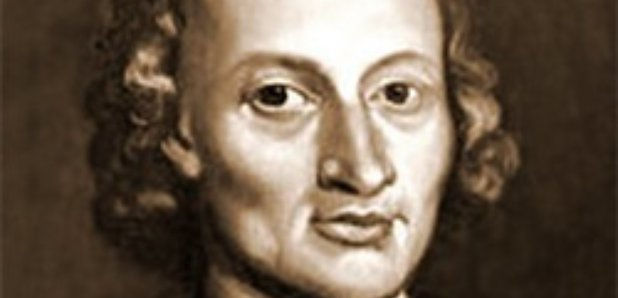The Pachelbel Canon: Classical music's most famous tune.
One of the most influential pieces ever written.
This page celebrates the Pachelbel Canon and its creator, Johann Pachelbel. His famous piece of music – the Canon – is heard at thousands of weddings and funerals across Europe, UK and the USA.
Even though it was written more than 300 years ago, Pachelbel’s Canon lives on as a beautiful piece of music in its own right, and as the basis for hundreds of new pieces of music and modern songs.
Pachelbel’s Canon was probably written in modern-day Germany in the late 1600s, but it has been made popular by an American conductor in the 1940s. For the first 250 years of its life, Pachelbel’s piece appears to have been entirely forgotten. That is, until the 20th century, when a scholar researching early German keyboard music published an edition of the piece in the 1920s. Then, just before the Second World War, a famous conductor called Arthur Fiedler began featuring it with his orchestra in their classical pops concerts.
They can even take the credit for having made the first ever commercial recording.
By thirty years on, Pachelbel’s canon is a hit – and when Robert Redford featured it in his film Ordinary People, the piece’s popularity was sealed. There are all sorts of arrangements, adaptations, mutations and variations. And of course the music has a hypnotic feel – joyful and reflective at the same time – which has made it a popular choice at weddings and funerals, and everything else in between. It has even inspired a Nobel Peace Prize Winner: the Burmese politician and campaigner Aung San Suu Kyi described it as music representing resilience and tranquility when she chose it as one of her Desert Island Discs for the BBC.
Read on to find out more more about Pachelbel and his Canon, the best recordings and some of the quirkiest Pachelbel Canon gifts you can find. Have your say, or contribute to the site.
The Pachelbel Canon: Are you inspired yet?
More about Pachelbel and his Canon
from wedding violinist and
wedding pianist Simon Jordan
Pachelbel The Man
More about Johann Pachelbel, and why he was known as Bachelbel to his friends.
What's a Canon?
The simplest of set-ups and some beautiful sounds. The maths behind the canon.
Music and Merchandise
Buy the sheet music, recommended recordings and various Pachelbel Canon-related products.
More Pachelbel To Explore
Not just a one-hit wonder: Pachelbel wrote a vast range of music. Find out what to listen to.
Pachelbel’s Canon filled the sun-drowned room where they learned each other and even then the fear flickered across him like an osprey’s shadow: This is too good to live for long.
Johann Pachelbel
The life and music of this obscure German composer, who died in 1706, remain little known, aside from his world-famous Canon. Bizarrely, some people knew him as “Bachelbel”, with a B, and to others he was “J Bach”! Only a handful of documents and pieces of music exist from which to reconstruct Pachelbel’s life story – but his canon happens to have a lot to tell us about Pachelbel and his music. It’s not flashy or grand, it doesn’t shout its worth to the rooftops in the attention-grabbing style of other composers – Pachelbel’s music is craftsman-like, unostentatious, with a deep sense of proportion. His pupils said he taught them a singing style; he was a quiet, undemonstrative kind of genius – and generations of musicians will agree with that!

More about Pachelbel the man
Johann Pachelbel’s career as an organist took him to Thuringia, home of the Bach dynasty of composers, with whom he had connections during his time at Erfurt and Eisenach. That was followed by brief appointments in Stuttgart and Gothe, before he finally returned to his home town, Nuremberg, by which time he had founded a small musical dynasty of his own. He published several modest collections of his music during his lifetime, which gives us an introduction – but not the whole story – to the great variety of music he produced in all those roles.
A handful of documents plot his life and career. Against the 1st of September 1653, there is a two-line entry in the baptismal register of Nuremberg: his father Hans was a wine dealer, his mother’s name was Anna Maria, and his godfather, Hans Karl, was a beef butcher. Nuremberg was a city in decline, but it had a rich musical life in the churches, and many musical instrument workshops. And it had a sizeable orchestra that featured in concerts given to thousands of people.
Pachelbel attended a church high school, and seems to have been a bright boy. He had extra lessons from the city’s director of choral music Heinrich Schwemmer, and possibly also with the organist Georg Caspar Wecker. Pachelbel then studied at the university of Altdorf and paid his way by taking a job as an organist. His father couldn’t support him, and he left without completing the first year. The following year, he enrolled at an academy in Regensburg, where he managed to get a scholarship after all the places had been filled!
Three years later, Pachelbel’s musical career blossomed in Vienna, where he became an organist at St Stephen’s Cathedral. It was a city where Italian music was all the rage – huge numbers of Italian composers had moved across, causing resentment among the city’s native musical talent. Some of his later works clearly recall those heady days in Vienna – especially when he was back in Nuremberg at the end of his life. His time in Vienna lasted three years before he moved to Eisenach to take his first proper job – and first met members of the vast Bach clan. He was spoken of as being “loyal and sincere, a perfect virtuoso in sake of our noble musical art, which is being undermined by ignorant ones. “
Pachelbel went next to Erfurt for what would would be a decade of experience as composer, teacher, and about five years in, family man. Erfurt nowadays is rather insignificant; but in Pachelbel’s day it was full of music and art. The town pipers woke the city up with a chorale at half-past three every weekday morning. There were further musical markers at noon for the midday meal, and then at bedtime. The town band – directed by another Bach – gave three concerts. Pachelbel was required to take care of the maintenance and tuning of the church organ, and to make sure that no stranger played it. He had to promise “to seek to live a godly, quiet and retired life” and to avoid “excessive drinking”. He accompanied the congregation in chorales and improvised in other parts of the service – and his reputation as an improviser spread.
Then tragedy stuck. Pachelbel had got married to Barbara Gabler at the end of October 1681. Her father was in charge of the local militia. Barbara and her husband had a son, Johann Georg, six months later, delivered by a midwife called Christina Bruck. He was baptised in April 1682. Pachelbel and his family rented an apartment from Johann Christian Bach the elder. Six months later, Barbara Pachelbel was dead, killed by the plague. Little Johann Georg followed her less than three weeks later. Erfurt lost half of its citizens during the six months that plague ravaged the city.
Pachelbel bought a house from the widow of his landlord JC Bach – who had also died of plague. He married a woman called Judith Drommer, who bore him a son a year later, who was stillborn. But in the next few years, Judith gave birth to five more sons and two daughters, who all outlived their father – against the odds for the time. After the third child came along, Pachelbel accepted a new job in Sondershausen, but overlooked protocol. Permission to move elsewhere was declined, and Pachelbel was offered more money to stay.
Surrounded by members of the Bach family, and having encountered more Bachs in Eisenach, Pachelbel became very close to the family and was invited to be godfather to Johanna Judith Bach. Johann Christoph – JS Bach’s eldest brother – was sent to Erfurt to study organ and harpsichord with him. JS Bach would have been just an infant at the time. In 1694, Pachelbel came to Ohrdruf for JC Bach’s wedding to Johanna Dorothea, where, it is said, he partnered with the father of the groom and one of the Bach cousins in a performance of the Canon. Through his brother, JS Bach seems to have been greatly influenced by Pachelbel. Recently, evidence has been revealed that JS studied Pachelbel’s organ music when a teenager.
Next, Pachelbel moved to Stuttgart for a new more lucrative position at the Württemberg court, this time leaving Erfurt on amicable terms. Stuttgart was a city of great rivalries between organists, who themselves were very rich – and French music was the most popular. Working for a cultivated duchess called Magdalena Sibylla, Pachelbel is said to have write a celebrated suite called “Musical Delight”. Just beginning to settle in Stuttgart, Pachelbel had to flee with his family from advancing French troops to his hometown of Nuremberg. He soon found an organist job in Gotha, and a record was made that a contract was sealed by a shake of hands, rather than a full written deal. An invitation for an organist job in Oxford was turned down, sadly, as was another offer from Stuttgart.
Back home in the imperial city of Nuremberg, Pachelbel’s former teacher Wecker passed away, leaving the top organist vacancy open. Pachelbel, mentioning his “poor wife and five uneducated children”, decided to take on the post. “Myself and my family must be very frugal, ” he pleaded. He was allowed to take on the position at St Sebald’s Church in Nuremberg, without application or “examination”. No other organists were invited to apply.
It was Pachelbel’s last professional position – and for his home city he wrote some of his greatest music, including the chamber music collection Musicalische Ergötzung, and, most importantly, the Hexachordum Apollinis (Nuremberg, 1699), a set of six keyboard arias with variations.
Though little is known about Pachelbel’s character, it seems he was a loving but ambitious family man; a man who had known great tragedy when his first family perished. Pachelbel died in early March 1706, and was buried on the ninth. One of the most famous musicians of his age, his rich musical legacy quickly became forgotten, living on in the history books rather than the concert halls – still today, it is difficult to find printed copies of his music.
What kind of place was Pachelbel’s homeland in the middle of the 17th century? Germany was suffering the aftermath of the Thirty Years War. Between 50% and 70% of the population had been killed. Many cities lay in ruins and would take a long time to recover. The incursion of Spanish, Swedish, Italian, Flemish and French soldiers had changed the racial make-up of the population, and German culture had taken such a beating over three decades that art and literature were following foreign models and tastes. Yet German music survived – outside the big cities. Cantors, organists and town musicians kept it alive, with the odds stacked heavily against them, especially in central Germany. In mid-Germany, Pachelbel was one of the very best organists in a region packed with musical talent – and in later years, he was a great organ teacher. Having Pachelbel’s name on your CV was a guarantee to finding a good job.
Composer and musician Simon Jordan reveals, “Pachelbel’s music blends the intellectual style of the north of Germany with the operatic, lyrical style of the South. But Pachelbel lived in the middle, and seems to have sought the best of both worlds. He dedicated one of his most popular collections of music to two master musicians, one from the North (Buxtehude) and (Richter).
Johann Pachelbel
The simplest of set-ups: three violins (or groups of violins), one cello, and 28 repetitions of eight bars of music. Yet from those small beginnings comes one of the best known pieces of classical music ever written: Johann Pachelbel’s Canon in D.
The piece is mathematical. Pachelbel used an ostinato (the same music repeated over and over – listen to the bass line) and a canon (a “round” involving the three violin parts – like London’s Burning and Frere Jacques). Wait a few seconds and you can hear the same music being performed by another violin part.
When and where was it composed? We know very little for certain. We think the piece was written about 1680. Some make the rather unlikely claim it was written for the wedding of Johann Christoph Bach (the brother of the more famous Johann Sebastian Bach), on 23rd October 1694. Pachelbel is known to have written more than 500 pieces, and was a famous organist in his hometown of Nuremburg (modern-day Germany). It’s said that he taught the man who became JS Bach’s teacher.
The Canon waited almost 300 years to become popular: until the 1970s, when the celebrated French conductor Jean-François Paillard made a famous recording. Thousands of musicians have followed in Paillard’s footsteps, and the famous 8-chord sequence has made it into countless pop songs, films and adverts. But the Canon seems to have made an impact on Handel, Haydn and Mozart – all used the famous Pachelbel bass line in some of their compositions.

Pachelbel's Canon in Modern Music
Pachelbel’s Canon was the inspiration for the following. Can you hear where it features?
A list of modern-day tracks using Pachelbel’s Canon. If you know of any songs or pieces not covered in this list which should be, please get in contact.
McNeal – Rise
Sweetbox – Life is Cool
Oscar Benton – I Believe In Love
All Angels – Salve Regina
El Bosco – Nirvana
Fahrenheit – Xin Li You Shu
Redsox – Sweet Dream
Sarah Connor – Love Is Color Blind
Philip Wesley – Ode to a composer
Die Firma – Die Eine
2 Brothers On The 4th Floor – There is a key
2 Brothers On The 4th Floor – Christmas Time
Theresia – Moonlight
Valensia – Bruxelles
Arthur – Pipo
DJ Angel – Flowrish
Claire Hamill – Someday We Will All Be Together
Karnak – Juvenar
Leftover Crack – Crack City Rockers
twenty47 – Get A Life, Again
Byul – Like a Star
Terry FU – Two Different Worlds
Luca Zeta – Over The Clouds
M2M – The Day You Went Away
N-Dubz ft. Bodyrox – We Dance On
Nicki Minaj – Girls Fall Like Dominoes
Shane Filan – Beautiful in White
Ashram – Last Kiss

